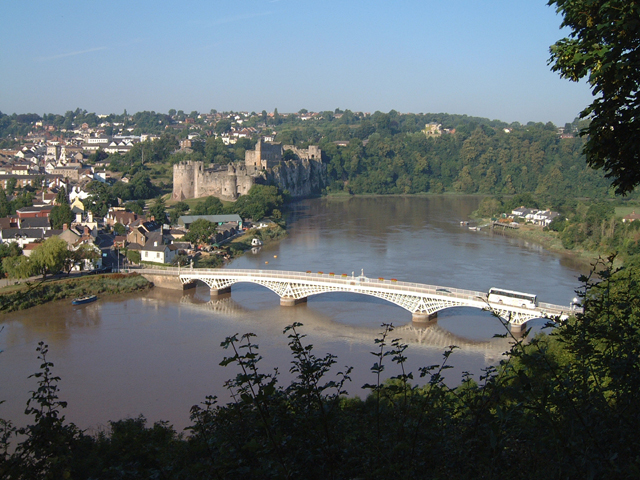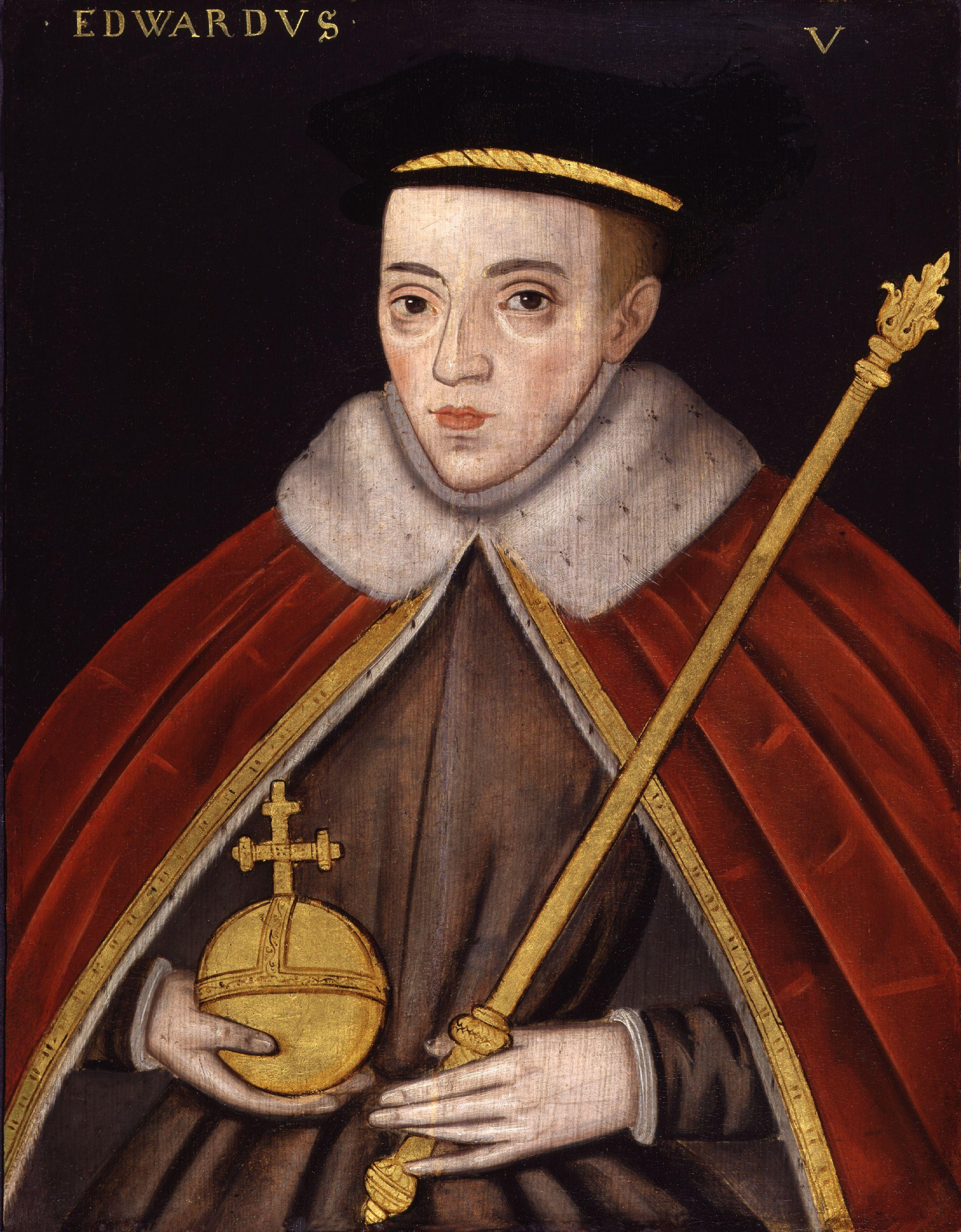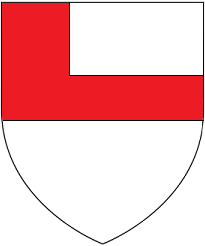|
Henry Stafford, 2nd Duke Of Buckingham
Henry Stafford, 2nd Duke of Buckingham (4 September 1455 – 2 November 1483), was an English nobleman known as the namesake of Buckingham's rebellion, a failed but significant collection of uprisings in England and parts of Wales against Richard III of England in October 1483. He was executed without trial for his role in the uprisings. Stafford is also one of the primary suspects in the disappearance (and presumed murder) of Richard's nephews, the Princes in the Tower. Life The only son of Humphrey Stafford, Earl of Stafford, and Margaret Beaufort, Countess of Stafford, Buckingham became Earl of Stafford in 1458 upon his father's death, and was made a ward of King Edward IV. He became the Duke of Buckingham at age 4 in 1460 following the death of his grandfather, Humphrey Stafford, 1st Duke of Buckingham, at the Battle of Northampton. In February 1466, at age 10, he was married to Katherine Woodville, youngest sister of Edward IV's wife Elizabeth Woodville, and d ... [...More Info...] [...Related Items...] OR: [Wikipedia] [Google] [Baidu] |
His Grace
His Grace and Her Grace are English Style (manner of address), styles of address used with high-ranking personages, and was the style for English monarchs until Henry VIII (r. 1509–1547), and for Scottish monarchs until the Act of Union (1707), Act of Union of 1707, which Union of the Crowns, united the Kingdom of Scotland and the Kingdom of England. In Great Britain and Ireland, it is also the style of address for archbishops, dukes, and duchesses; e.g. His Grace the Duke of Norfolk and His Grace the Lord Archbishop of Canterbury. The correct style is “Your Grace” in spoken and written form; as a stylistic descriptor for Dukes in the United Kingdom, British dukes, it is an abbreviation of the full, formal style: “The Most High, Noble and Potent Prince His Grace”. However, a Royal dukedoms in the United Kingdom, royal duke, such as Prince Edward, Duke of Kent, is addressed as Your Royal Highness. Ecclesiastical usage Christianity The style "His Grace" and "Your Grace" ... [...More Info...] [...Related Items...] OR: [Wikipedia] [Google] [Baidu] |
Edward IV Of England
Edward IV (28 April 1442 – 9 April 1483) was King of England from 4 March 1461 to 3 October 1470, then again from 11 April 1471 until his death in 1483. He was a central figure in the Wars of the Roses, a series of civil wars in England fought between the Yorkist and Lancastrian factions between 1455 and 1487. Edward inherited the Yorkist claim to the throne at the age of eighteen when his father, Richard, Duke of York, was killed at the Battle of Wakefield in December 1460. After defeating Lancastrian armies at Mortimer's Cross and Towton in early 1461, he deposed King Henry VI and took the throne. His marriage to Elizabeth Woodville in 1464 led to conflict with his chief advisor, Richard Neville, Earl of Warwick, known as the "Kingmaker". In 1470, a revolt led by Warwick and Edward's brother George, Duke of Clarence, briefly re-installed Henry VI. Edward fled to Flanders, where he gathered support and invaded England in March 1471; after victories at the ba ... [...More Info...] [...Related Items...] OR: [Wikipedia] [Google] [Baidu] |
River Severn
The River Severn (, ), at long, is the longest river in Great Britain. It is also the river with the most voluminous flow of water by far in all of England and Wales, with an average flow rate of at Apperley, Gloucestershire. It rises in the Cambrian Mountains in mid Wales, at an altitude of , on the Plynlimon massif, which lies close to the Ceredigion/Powys border near Llanidloes. The river then flows through Shropshire, Worcestershire and Gloucestershire. The county towns of Shrewsbury, Worcester, England, Worcester and Gloucester lie on its course. The Severn's major tributaries are the River Vyrnwy, Vyrnwy, the River Tern, Tern, the River Teme, Teme, the Warwickshire Avon, and the River Stour, Worcestershire, Worcestershire Stour. By convention, the River Severn is usually considered to end, and the Severn Estuary to begin, after the Prince of Wales Bridge, between Severn Beach in South Gloucestershire and Sudbrook, Monmouthshire. The total area of the estuary's draina ... [...More Info...] [...Related Items...] OR: [Wikipedia] [Google] [Baidu] |
River Wye
The River Wye (; ) is the Longest rivers of the United Kingdom, fourth-longest river in the UK, stretching some from its source on Plynlimon in mid Wales to the Severn Estuary. The lower reaches of the river forms part of Wales-England border, the border between England and Wales. The Wye Valley (lower part) is designated a National Landscape (formerly an Area of Outstanding Natural Beauty). The Wye is important for nature conservation and recreation, but is affected by pollution. Etymology The meaning of the river's name is not clear. Possibly the earliest reference to the name is ''Guoy'' in Nennius' early 9th Century and the modern Welsh language, Welsh name is , meaning ''wet'' or ''liquid''. The Wye was much later given a Latin name, , an adjective meaning 'wandering'. The Tithe maps, Tithe map references a Vagas Field in both Whitchurch and Chepstow. Philologists such as Edward Lye and Joseph Bosworth in the 18th and early 19th centuries suggested an Old English deri ... [...More Info...] [...Related Items...] OR: [Wikipedia] [Google] [Baidu] |
Welsh Marches
The Welsh Marches () is an imprecisely defined area along the border between England and Wales in the United Kingdom. The precise meaning of the term has varied at different periods. The English term Welsh March (in Medieval Latin ''Marchia Walliae'') was originally used in the Middle Ages to denote the marches between England and the Principality of Wales, in which Marcher lords had specific rights, exercised to some extent independently of the king of England. In modern usage, "the Marches" is often used to describe those English counties which lie along the border with Wales, particularly Shropshire and Herefordshire, and sometimes adjoining areas of Wales. However, at one time the Marches included all of the historic counties of Cheshire, Shropshire, Herefordshire, Worcestershire and Gloucestershire. Etymology The term ''March'' is from the 13th-century Middle English ''marche'' ("border region, frontier"). The term was borrowed from Old French ''marche'' ("limit, bo ... [...More Info...] [...Related Items...] OR: [Wikipedia] [Google] [Baidu] |
Lady Margaret Beaufort
Lady Margaret Beaufort ( ; 31 May 1443 – 29 June 1509) was a major figure in the Wars of the Roses of the late 15th century, and mother of King Henry VII of England, the first House of Tudor, Tudor monarch. She was also a second cousin of Kings Henry VI of England, Henry VI, Edward IV and Richard III of England. A descendant of King Edward III, Lady Margaret passed a disputed claim to the English throne to her son, Henry VII of England, Henry Tudor. Capitalising on the political upheaval of the period, she actively manoeuvered to secure the crown for her son. Margaret's efforts ultimately culminated in Henry's decisive victory over King Richard III at the Battle of Bosworth Field. She was thus instrumental in orchestrating the rise to power of the Tudor dynasty. With her son crowned Henry VII, Margaret wielded a considerable degree of political influence and personal autonomy. She was also a major patron and cultural benefactor during her son's reign, initiating an era of ... [...More Info...] [...Related Items...] OR: [Wikipedia] [Google] [Baidu] |
Henry VII Of England
Henry VII (28 January 1457 – 21 April 1509), also known as Henry Tudor, was King of England and Lord of Ireland from his seizure of the crown on 22 August 1485 until his death in 1509. He was the first monarch of the House of Tudor. Henry was the son of Edmund Tudor, 1st Earl of Richmond, and Lady Margaret Beaufort. His mother was a great-granddaughter of John of Gaunt, an English prince who founded the Lancastrian cadet branch of the House of Plantagenet. His father was the half-brother of the Lancastrian king Henry VI. Edmund Tudor died three months before his son was born, and Henry was raised by his uncle Jasper Tudor, a Lancastrian, and William Herbert, a supporter of the Yorkist branch of the House of Plantagenet. During Henry's early years, his uncles and the Lancastrians fought a series of civil wars against the Yorkist claimant, Edward IV. After Edward retook the throne in 1471, Henry spent 14 years in exile in Brittany. He attained the throne when his f ... [...More Info...] [...Related Items...] OR: [Wikipedia] [Google] [Baidu] |
Richard Of Shrewsbury
Richard of Shrewsbury, Duke of York (17 August 1473) was the second son of King Edward IV of England and Elizabeth Woodville. Richard and his older brother, who briefly reigned as King Edward V of England, mysteriously disappeared shortly after their uncle Richard III became king in 1483. Early life Richard was born at the Dominican Friary in Shrewsbury on 17 August 1473, the sixth child and second son of reigning King of England Edward IV and his wife Elizabeth Woodville. Prince Richard was created Duke of York on 28 May 1474 and was knighted on 18 April 1475. From this time on, it became a tradition for the second son of the English sovereign to be Duke of York. He was made a Knight of the Garter in May 1475. Marriage to Anne de Mowbray In January 1476, John de Mowbray, 4th Duke of Norfolk, Earl of Nottingham and Warenne, died leaving his infant daughter Anne as his sole heiress. Anne was quickly marked out as a bride for Richard. In anticipation of the marriage, ... [...More Info...] [...Related Items...] OR: [Wikipedia] [Google] [Baidu] |
Edward V
Edward V (2 November 1470 – ) was King of England from 9 April to 25 June 1483. He succeeded his father, Edward IV, upon the latter's death. Edward V was never crowned, and his brief reign was dominated by the influence of his uncle and Lord Protector, the Duke of Gloucester, who deposed him to reign as King Richard III; this was confirmed by the ''Titulus Regius'', an Act of Parliament which denounced any further claims through Edward IV's heirs by delegitimising Edward V and all of his siblings. This was later repealed by Henry VII, who subsequently married Elizabeth of York, Edward V's eldest sister. Edward V and his younger brother, Richard of Shrewsbury, are known as the Princes in the Tower. They disappeared after being sent to heavily guarded royal lodgings in the Tower of London. Responsibility for their disappearance (and presumed deaths) is widely attributed to Richard III, who sent them to the Tower, but the lack of conclusive evidence and conflicting contempora ... [...More Info...] [...Related Items...] OR: [Wikipedia] [Google] [Baidu] |
Richard III
Richard III (2 October 1452 – 22 August 1485) was King of England from 26 June 1483 until his death in 1485. He was the last king of the Plantagenet dynasty and its cadet branch the House of York. His defeat and death at the Battle of Bosworth Field marked the end of the Middle Ages in England. Richard was created Duke of Gloucester in 1461 after the accession to the throne of his older brother Edward IV. This was during the period known as the Wars of the Roses, an era when two branches of the royal family contested the throne; Edward and Richard were Yorkists, and their side of the family faced off against their House of Lancaster, Lancastrian cousins. In 1472, Richard married Anne Neville, daughter of Richard Neville, 16th Earl of Warwick, and widow of Edward of Westminster, son of Henry VI of England, Henry VI. He governed northern England during Edward's reign, and played a role in the English invasion of Scotland (1482), invasion of Scotland in 1482. When Edward IV died ... [...More Info...] [...Related Items...] OR: [Wikipedia] [Google] [Baidu] |
Richard Woodville, 1st Earl Rivers
Richard Woodville, 1st Earl Rivers (1405 – 12 August 1469), also Wydeville, was the father of Elizabeth Woodville and father-in-law of Edward IV. Early life Born at Maidstone in Kent, Richard Woodville was the son of Richard Wydeville (Woodville), chamberlain to the Duke of Bedford, and Joan Bittlesgate (or Bedlisgate), the daughter of Thomas Bittlesgate of Knightstone"Woodville Family", http://www.tudorplace.com.ar/WOODVILLE.htm. Accessed on 10-4-2015. in the parish of Ottery St Mary in Devon. He was also a grandson of John Wydeville who was Sheriff of Northamptonshire (in 1380, 1385, 1390). Marriage and courtly career Woodville followed his father into service with the Duke of Bedford. In 1433 the Duke had married the 17-year-old Jacquetta of Luxembourg; she was the Duke's second wife and he was significantly older and in ill health. When the Duke died in 1435, Jacquetta was left a childless and wealthy widow. She was required to seek permission from King Hen ... [...More Info...] [...Related Items...] OR: [Wikipedia] [Google] [Baidu] |
Elizabeth Woodville
Elizabeth Woodville (also spelt Wydville, Wydeville, or Widvile; c. 1437Karen Lindsey, ''Divorced, Beheaded, Survived'', p. xviii, Perseus Books, 1995. – 8 June 1492), known as Dame Elizabeth Grey during her first marriage, was Queen of England from 1 May 1464 until 3 October 1470 and from 11 April 1471 until 9 April 1483 as the wife of King Edward IV. She was a key figure in the Wars of the Roses, a dynastic civil war between the Lancastrian and the Yorkist factions between 1455 and 1487. At the time of her birth, Elizabeth's family was of middle rank in the English social hierarchy. Her mother, Jacquetta of Luxembourg, had previously been an aunt-by-marriage to King Henry VI, and was the daughter of Peter I, Count of Saint-Pol. Elizabeth's first marriage was to a minor supporter of the House of Lancaster, John Grey of Groby. He died at the Second Battle of St Albans in 1461, leaving Elizabeth a widowed mother of two young sons. Elizabeth's second marriage, in 1464, to ... [...More Info...] [...Related Items...] OR: [Wikipedia] [Google] [Baidu] |










